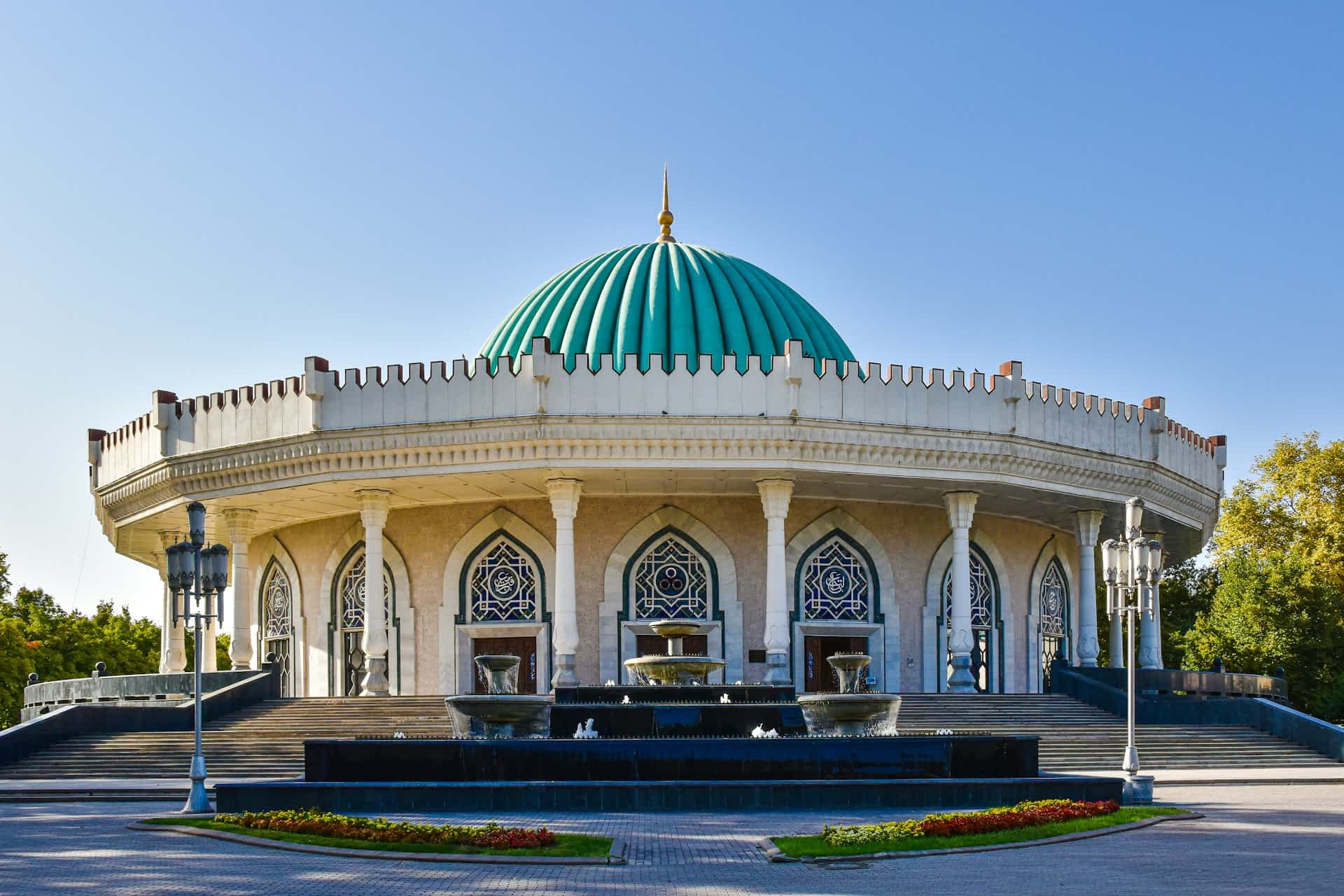The complex, now known as Hazrat Imam (or Hast Imam in modern pronunciation), consists of the Barakhan Madrassah, Tilla Shaykh Mosque, Muyi Muborak Madrassah, the tomb of Kaffal Shashi, Namozgah Mosque, the newly built Hazrat Imam Mosque, and the new administrative building of the Muslim Board of Uzbekistan. It is named in honour of Sheikh Kaffal Shashi.
Today, over 20 craftsmen sell their handmade products in the courtyard of Barakhan Madrassah at the Hazrat Imam complex in Tashkent. Visitors can find a variety of items, including ikat fabrics, jewellery, woodcarvings, and pottery.
Abubakr Muhammad Kaffal Shashi, one of the first imams of the Muslim world, was a native of Tashkent. He was a preacher and distributor of Shafiism, a well-known Muslim scholar, and an expert in the Holy Qur’an, Hadith, Islamic law, and lexicology.

In the 16th century, during the Sheybanid period, Tashkent developed into a cultural, trade, and craft centre of Maverannahr. During this time, the mausoleum of Kaffal Shashi was re-erected on the ruins of the old building, which was one of the main shrines of the city. A large, shady cemetery grew to the south.
By the mid-16th century, the complex included the Kaffal Shashi mausoleum and Barakhan Madrassah, which together formed a single complex with two mausoleums: Unnamed and Suyunij Khan. In 1579, a new mausoleum for Sheikh Babahodzhi was built in the area.
Barakhan Madrassah was constructed in the 16th century under the direction of Nauruz Ahmadhan. The Muslim Board of Uzbekistan used the building from 1950 to 2007. Muyi Muborak Madrassah, also built in the 16th century, contains a hair claimed to be from the Holy Prophet Muhammad (SAW). It was named 'Muyi Muborak,' meaning 'Sacred Hair.'
Currently, the madrassah serves as a library for the Muslim Board of Uzbekistan, notably housing the 7th-century Koran of Khalif Uthman, which is claimed to be the world's oldest copy of the Koran, among other rare manuscripts.
The tomb of Kaffal Shashi was erected in honour of Abu Bakr ibn Ali ibn Ismail al-Kaffal Al-Shashi. The original form of the tomb was not preserved; its current form was rebuilt by Ghulam Husayn in 1542. Architecturally, the tomb was designed as a khanaka, a complex structure including cells, a mosque, a shrine, and other elements.
Built around 1865, Namozgah Mosque was once one of the largest mosques in Tashkent, hosting main holiday prayers such as Eid Ramazan and Eid al-Adha. Since 1971, it has housed the Tashkent Islamic Institute.
The construction of the Hazrat Imam Mosque was completed in 2007, initiated by President Islam Karimov. The mosque, a unique symbol of Tashkent's architectural style, features a terrace with twenty carved sandalwood columns at its entrance. It also has two large blue domes, the interiors of which are decorated with gold leaf, similar to the Tillakari Madrassah in Samarkand. The window openings are designed to allow sunlight to continuously penetrate the mosque from sunrise to sunset. The mosque's entrance is flanked by two minarets, each 53 meters tall.
| Category: | Culture |
|---|---|
| Address: | Karasaray Street, Shaikhontokhur district |
Tashkent Tours
Interested in being shown around Tashkent by a friendly and knowledgeable local guide?

We offer some of the most affordable tours in Tashkent, led by professional and experienced guides.
Our tours include:
- City walking tours exploring Tashkent’s history, culture, and architecture
- Day trips from Tashkent to Samarkand and other cities of interest
- Scenic mountain tours to Chimgan, Charvak, and beyond
Whether you’re looking to explore Tashkent’s rich urban history or escape to the countryside, we provide some of the best value-for-money experiences in the city.